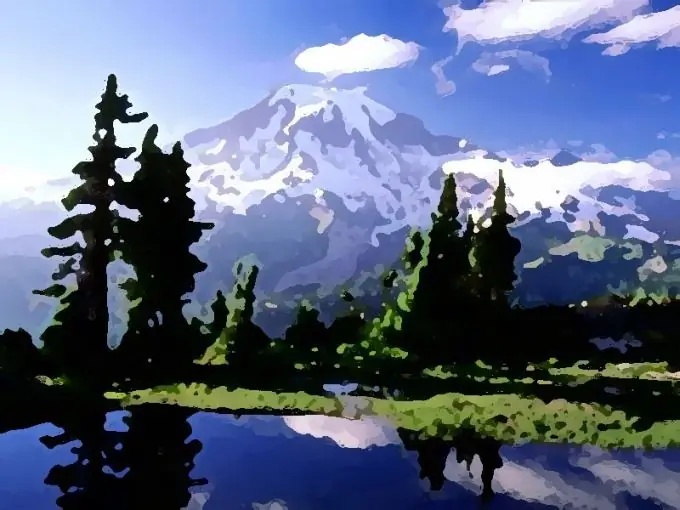Painting a landscape with gouache is an exciting experience. Interesting effects can be achieved. The paint is perfectly applied with any brush and palette knife. Gouache is easy to dilute with water, unlike oil, it does not dry so long. The picture turns out quickly - as if it instantly comes to life under the brush.

It is necessary
Pencil, gouache, brushes, water, a sheet of paper for watercolors, easel
Instructions
Step 1
Go to the bosom of nature: it is better to draw a landscape from life. Some natural phenomena must be seen with your own eyes in order to reliably convey in the picture. Take a sheet of watercolor paper. Secure to an easel. Gouache is a water-based paint, like watercolor, so this paper will work. Too thin paper will quickly get wet and the surface will become wavy. Dilute the paint with water. Apply the background in broad strokes and let it dry. On the finished background, draw a sketch with a pencil marked "T" - hard.
Step 2
Start painting with the sky and clouds. Try to use multiple shades for the sky. The more tones you take, the richer the sky will look. The tonality depends on what time of day you are portraying. Apply the clouds with light strokes of white gouache. Don't use too much paint - let the clouds be translucent.
Step 3
Think carefully about your composition. Determine where the background and foreground are in the picture. Connect them with some elements: paths going up the mountain, the reflection of objects in a lake, or a road leading to the edge of the forest. Sketch the large objects of the painting with light strokes of gouache. Decide on lighting. By the way the shadows fall, you can determine the time of day in the picture. If at noon the shadows are long, like the evening ones, the realism will be violated.
Step 4
Draw in the small details of the picture. Use brushes of different diameters and bristle qualities. Plants and tree crowns are best obtained with tools with soft bristles. Brushes with hard hair or a palette knife are great for painting mountains. When working with a palette knife, dilute the paint thicker or do not add water at all if the gouache is of a pasty consistency.
Step 5
Use an interesting trick to create small highlights on the grass. Dilute the gouache to an intensely colored water. Dip a fluffy, soft-bristled brush in liquid paint and spray over the dried pattern. The result will be an amazing effect - as if thousands of small suns are playing on every blade of grass and leaf.
Step 6
Take a close look at the picture. Add small touches, clarify the details.






